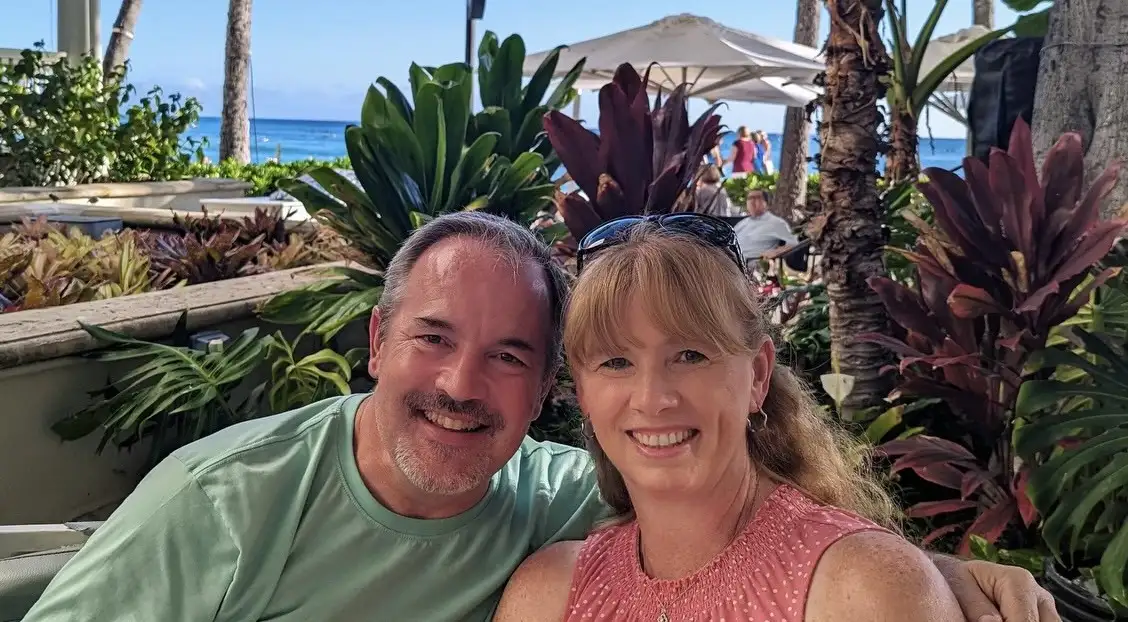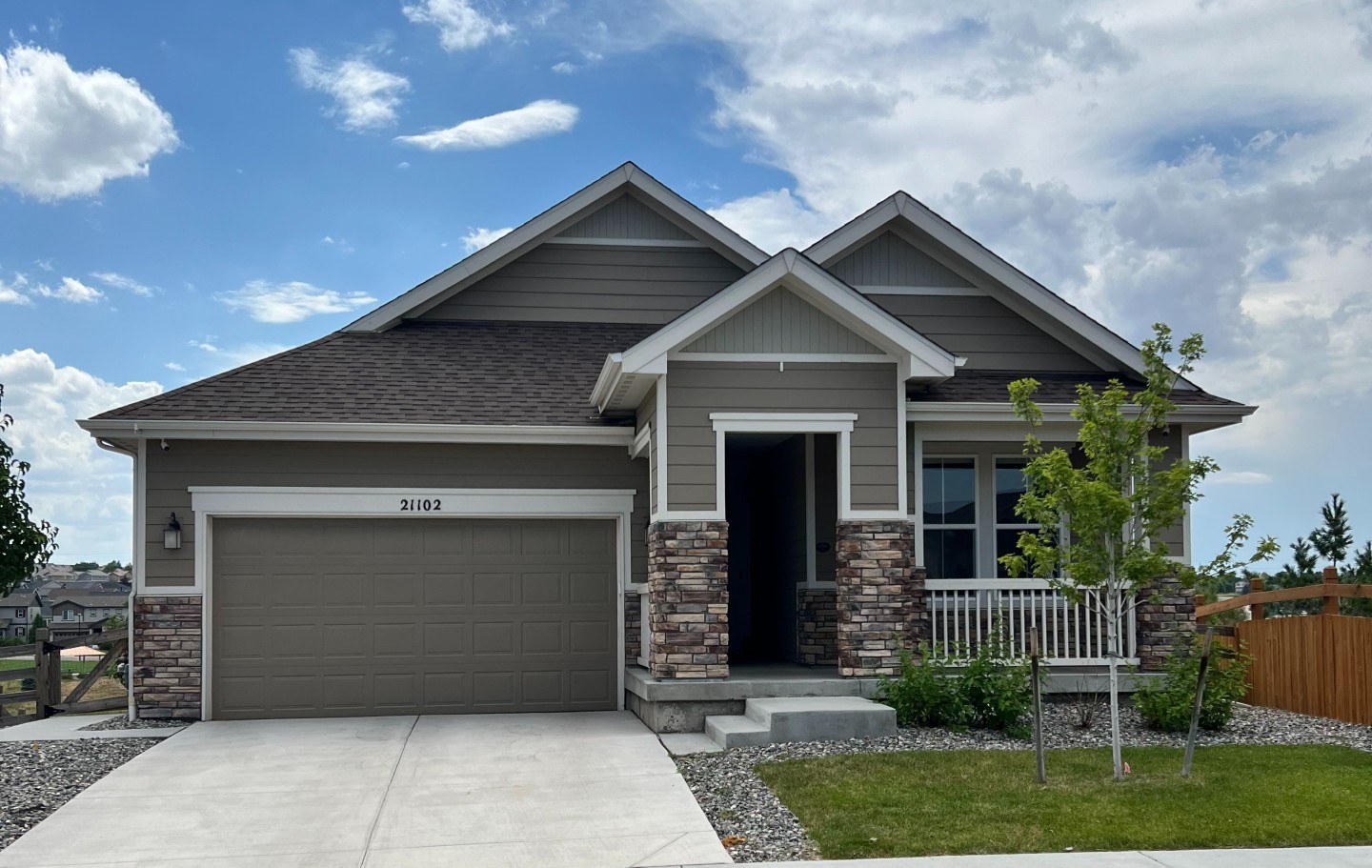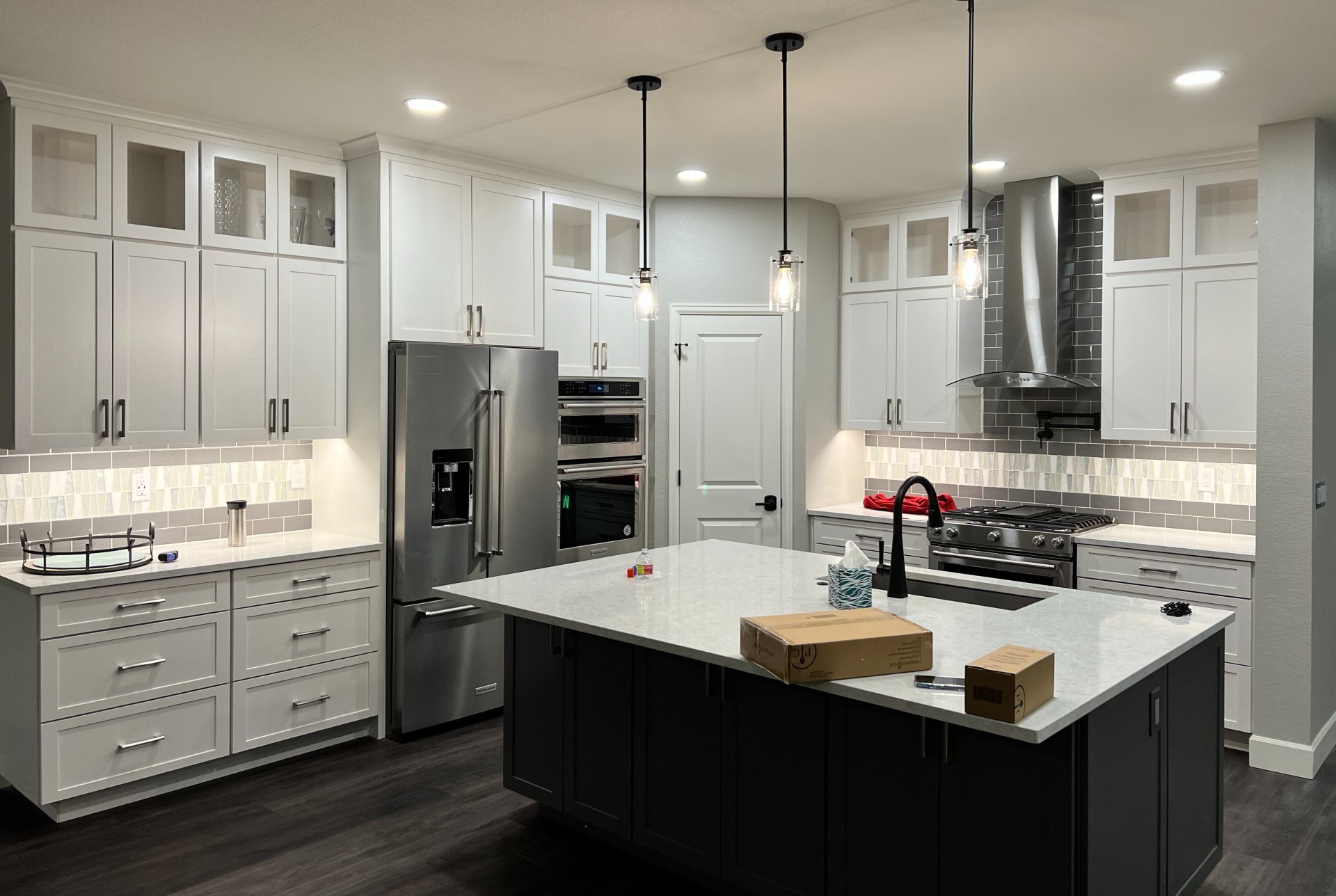Disillusioned With Resale Homes, Buyers Look To New Construction

Real Estate agent Crystal Lowe and her husband opted to have a home built to their liking rather than shop for a resale.
New Construction Is Customizable, But Upgrades Come At a Cost
Buying a newly built home comes with a lot of perks. You’re the first to live in it. You can also customize it and choose the lot location, floor plan, elevation and finishes down to the paint, flooring and cabinetry.
But, as most new construction homeowners know, these extras typically come at a steep cost.
As a real estate agent, Crystal Lowe has seen it time and again with her clients who buy new construction. But she recently found out how quickly costs add up when she and her husband built their new home in the highly sought-after Copperleaf subdivision of Aurora, Colorado, a few years ago.
The Lowes' new construction home they had built in a highly desirable neighborhood of Aurora, Colorado.
“There are a lot of start-up expenses to new construction that you maybe wouldn’t face with a resale,” says Lowe, a broker associate with Novella Real Estate in Greenwood Village, Colorado. For instance, Lowe and her husband were surprised with a $50,000 lot premium and a $15,000 line item to make their floor plan a mirror image of the model home, she says.
“Keep in mind when looking at new construction that when you walk through those beautiful model homes, they have almost every upgrade that can possibly be purchased in there,” Lowe says.
Above: Putting finishing touches on the kitchen in the Lowe's new construction home.
Family of 4 Opts Out of Too-Small Resale Homes and Finds New-Construction Gem
When Ian Knox and his wife, Michelle Noble, unexpectedly found out their landlord wasn’t renewing their lease over the summer, the couple had to scramble to figure out where to live next.
The couple, lifelong renters, decided it was time to buy a home so they could avoid this predicament ever again.
The family of four (the couple and their two older daughters) needed enough space for all of them, along with a large living room for their super-sized couch and a basement-level room or office for Knox’s production studio. However, Knox says they were underwhelmed by the existing homes on the market in Colorado Springs, Colorado.
For nearly a month, the family looked at resales but came up empty in their search. So, instead, they turned to new construction and struck gold.
“The resale properties in our price range were just too small for my family and I,” Knox says. “Even with the higher interest rate, there's no time like the present (to buy).”
Completed in May, the family’s newly built townhome has all the space and amenities they need. Despite a $461,900 price tag with a 6.75% interest rate, Knox says it was the right time to jump in. Plus, the incentives their builder, Challenger Homes, offered didn’t hurt either.
“It will be the first property we have actually owned, which has been a dream of ours for years,” Knox says. “Also, it's very similar to where we currently live and it's in the same townhome complex. We also love the location because my youngest daughter does not have to change schools for her last year in high school.”
Tips for Buying New Construction
Thinking of ditching resales in favor of a brand-new home? Here are some tips to help you find the new home of your dreams and avoid common hiccups.
Ask About Builder Incentives
Most home builders offer in-house financing through their own mortgage company or another preferred lender, enabling them to offer lower interest rates or builder-paid closing costs.
Other incentives might include free finish upgrades or extended interest rate locks. Many builder financing programs offer rate buy-downs that allow buyers to lock in a low interest rate for either an introductory period or for the life of the loan — the latter usually through paying discount points.
For example, national homebuilder Lennar in July advertised a fixed rate of 4.99% (5.039% APR) and up to $10,000 in builder-paid closing costs for buyers who purchase a move-in ready new home in the Puget Sound area of Seattle.
Stick to Your Budget
If you’re on a tight budget, avoid scope creep on your newly built home, Lowe advises. You can quickly run up a huge tab with your builder with upgrades and the smallest add-ons, such as a refrigerator, moving light switches or adding a ceiling fan or blinds.
“In most new construction, everything is an upgrade. They advertise these base prices, but you're pretty much not ever going to pay that,” says Lowe. She adds that you can always take builder-grade finishes now and hire a contractor after your home is built to customize the way you want it and, often, for less money.
For buyers on a limited budget, resale might be the better option because what you see is what you get. Plus, sellers (unlike home builders) may be more inclined to negotiate on price to close a deal while builders upcharge for a laundry list of items, she adds.
Understand Your Builder’s Contractual Timeline
A lot of new construction buyers tend to overlook a big detail in their contracts when they fall in love with their dream home: the timeline.
“Technically, in a lot of these new-construction contracts, the builder actually has up to two years to complete the home,” Lowe says.
She adds that they might have a target completion date but, in reality, the contract gives the builder extra cushion to finish the home. So if you’re on a tight timeline, building a home from scratch might not work for you.
Hire A Home Inspector And Real Estate Agent
New construction isn’t without its flaws, and not all home builders are created equal. That’s why Lowe recommends hiring a real estate agent to guide you through the process. When working with clients who are buying a new home, Lowe does regular walk-throughs during each stage of construction — and she has caught builder mistakes her clients would normally miss.
Likewise, although new homes come with a builder’s warranty (usually up to one year), it’s a good idea to hire a professional home inspector to ensure your newly built home is up to snuff. If your builder took shortcuts or rushed parts of the construction process, you want to catch those items and get them addressed before your builder’s warranty expires, Lowe says.
Look Into Down Payment Assistance Programs
If your builder doesn’t offer any incentives to help with closing costs or your down payment, check with your local housing authority and other down payment assistance programs.
To offset their initial home-buying expenses, Knox says he and his wife got help from the Colorado Housing and Finance Authority (CHFA) down payment assistance program.
However, Knox stresses the importance of paying off existing debt and saving as much as possible to put you in the best possible position to get a competitive mortgage.
“Make sure you explore all options for longevity, not (just) the short term,” Knox recommends.
Stubbornly High Mortgage Rates, Lack of Resales Lure Buyers to New Construction
Like Knox and his family, homebuyers fed up with a lack of affordable resale options have flocked to new construction as a salve.
When mortgage rates climbed in late 2022 after reaching record lows during the pandemic, this created a so-called “lock-in effect.” Homeowners who normally would have traded up to another home have largely stayed put to hang on to their existing low rate, especially with higher home prices in the mix.
As a result, new-home sales surged in 2023 as builders clamored to offer incentives and more attractive financing rates. However, with mortgage rates staying stubbornly high at around 7% and even touching 8% in the past year, both new- and existing-home sales have cooled considerably.
In June, new-home sales fell to their lowest level since November 2023 thanks, in large part, to higher mortgage rates, according to an analysis of HUD and U.S. Census Bureau data from the National Association of Home Builders. While sales of new, single-family homes slipped 0.6% to 617,000 units in June from the previous month, the sales pace fell 7.4% from a year ago.
The slowdown in demand for single-family new homes has pushed the category’s inventory up 11.2% to a level of 476,000 compared to a year ago. This equals a supply of 9.3 months at the current pace of building, according to NAHB estimates.
With the notable lack of existing homes for sale, the combined inventory for new and existing homes is at an anemic 4.7 months’ supply in June, the NAHB estimates.
“Many potential buyers are remaining in a holding pattern due to elevated mortgage rates that averaged near 7% in June,” Jing Fu, NAHB’s director of forecasting and analysis, wrote in a blog post. “However, moderating inflation suggests lower interest rates in the months ahead and that should bring more buyers off the sidelines.”






